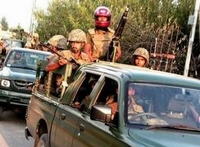Many observers today view Pakistan much as they do neighboring Afghanistan: primarily in terms of terrorists and the Taliban. Yet, despite their lethality, these groups have so far remained largely limited to Pakistan's periphery -- an area of historical neglect with little consequence for the upper echelons of state power. In contrast, attention paid to the rest of Pakistan, where the vast majority of Pakistanis reside, has been sparser. This skewed focus makes it difficult to fully grasp the challenges driving insecurity in Pakistan. In fact, despite the dire depictions, no tribal insurgency can defeat Pakistan's army and overthrow the state. Rather, discontent in the interior is the surest way to destabilize the country.
Karachi symbolizes Pakistan's wider woes, including issues of demographics, economics, political dysfunction, social and status divides that are often ignored. The southwestern coastal city is the country's economic lifeline, providing about 20 percent of national GDP and more than 50 percent of government revenue. Pakistan's most populous city, Karachi houses the country's largest port and the national stock exchange, and its urban sprawl and cosmopolitanism set it a world apart from the lawlessness of the tribal frontier.
Karachi is also, however, the Rio de Janeiro of South Asia. It is highly weaponized, with modern assault rifles, phosphorus grenades and rocket-propelled grenades common. Sprawling slums are controlled by rival gangs and groups warring for control of urban space and resources. Poverty is endemic, the rule of law weak and politics and criminality closely intertwined.

